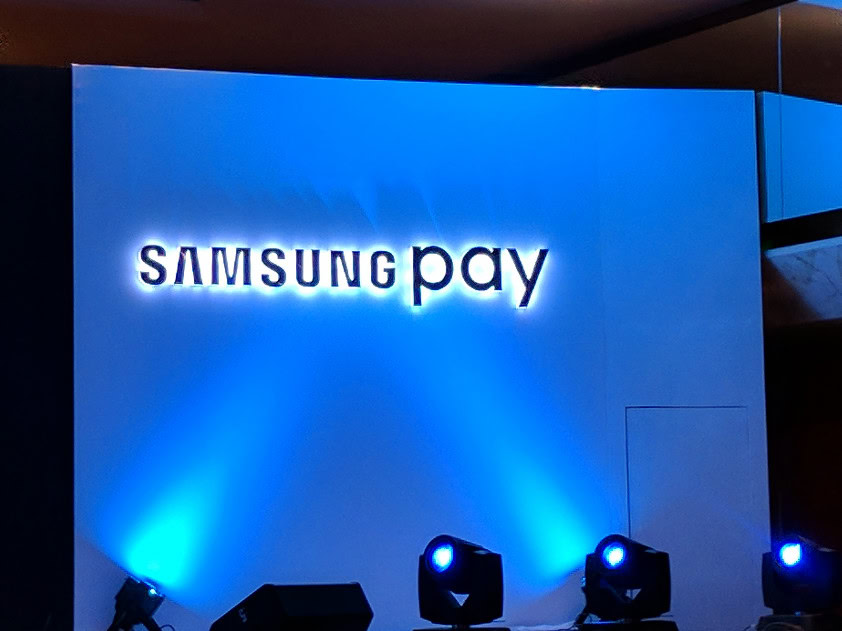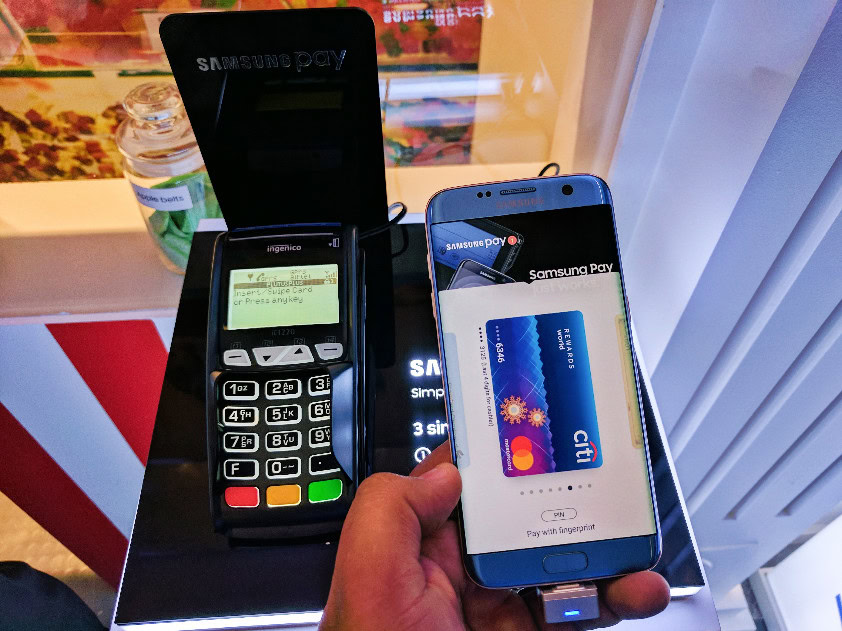Affiliate links on Android Authority may earn us a commission. Learn more.
Samsung Pay launches in India: All you need to know
Published onMarch 22, 2017

Samsung has launched the company’s digital payment service – Samsung Pay – in India. With its launch in India, Samsung Pay is fully available in 12 global markets, including South Korea, the US, China, Spain, Singapore, Australia, Puerto Rico, Brazil, Russia, Thailand, and Malaysia, after being launched in South Korea in 2015.
The service allows you to pay at retail stores simply by waving your Samsung smartphone near a cash register instead of swiping a credit or debit card or sharing your payment information. The service also integrates with Paytm, the leading mobile wallet in the country, and Unified Payments Interface (UPI).
Samsung Pay works with all regular swipe-based card machines which support NFC or MST (magnetic secure transmission). MST sends a magnetic signal from the smartphone to the payment terminal’s card reader to emulate swiping a physical card. Since there’s no hardware or software upgrade required to the payment terminal, one can expect quicker and seamless adoption and broad acceptance at retail stores.
Note that Samsung Pay doesn’t allow online payments, and can be only used for in-person, physical transactions. So, it’s not a replacement for other online payment services like mobile wallets or digital payments apps that are increasingly getting ubiquitous in the country following government’s push for a digital economy.
Partners
At the launch, Samsung Pay works with credit cards and debit cards issued by a handful of banks – Axis Bank, HDFC Bank, ICICI Bank, State Bank of India (only credit cards), and Standard Chartered Bank. The service has also integrated cards from Visa, MasterCard, and American Express. Citibank India is a forthcoming issuer and its credit cards will be live on Samsung Pay shortly. The support for debit cards is handy since the former are more pervasive in India than credit cards.
The company has partnered with Axis Bank to facilitate payments via UPI and Samsung Pay also supports payments through mobile wallets, although at the launch, Paytm is the only service on board.
Supported Devices
Of course, Samsung Pay works only with top-tier smartphones from the company, and not across their portfolio which includes a big bunch of budget and mid-range smartphones that form the major share of devices sold in India.
At the moment, Samsung Pay works with select models in the Galaxy series. These include Galaxy S7 edge, Galaxy S7, Galaxy Note 5, Galaxy S6 edge+, Galaxy A5 (2016), Galaxy A7 (2016), Galaxy A5 (2017) and Galaxy A7 (2017). And yes, Samsung Pay also works with Samsung Gear S3 smartwatch.

How to use Samsung Pay
Samsung Pay can be used for payments at retail outlets simply by waving your Samsung smartphone near a cash register. The service also accepts payments via QR codes – supporting UPI and Paytm through this method.
To make a payment, the user will need to fire the Samsung Pay app on the phone, select the preferred card, and once the vendor has entered the amount required to be paid on the Point-of-Sale (POS) machine, authenticate the payment through a PIN or fingerprint on the app, and bring the phone near the POS terminal.
According to the company, Samsung Pay is a highly secure platform as it works with three levels of security – fingerprint authentication, card tokenization, and Samsung’s defense-grade mobile security platform Samsung KNOX.
Do you have a Samsung Pay-supported smartphone, and are you looking forward to try out the service? Also, would Samsung Pay become a differentiating feature when you’re looking to buy a new smartphone next? Tell us in the comments!